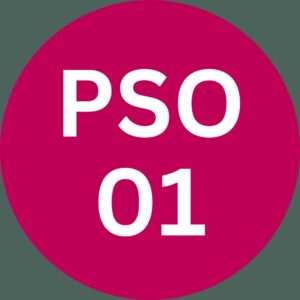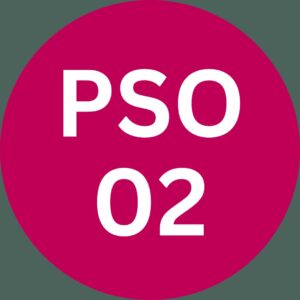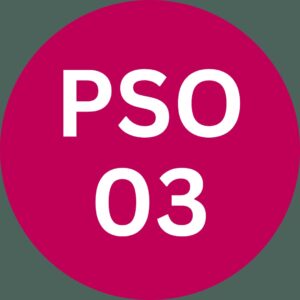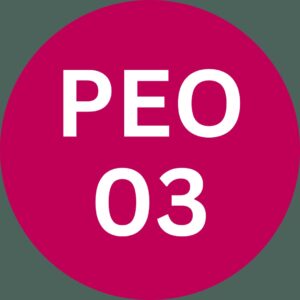Electrical Engineering
JBIT welcomes you to be a part of an exceptionally collaborative group of students, who combine knowledge, creativity, rationality, leadership, and problem solving and communication abilities, to not only meet but also set new industry standards.
The Electrical Engineering Program intertwines a traditional Electrical Engineering curriculum with fundamental computing core, preparing students for the rapidly changing and technology-driven world.
The department has dedicated and state of the art teaching and research laboratories to cater to teaching and research needs. The faculty members have a strong sense of responsibility and expertise to provide the finest possible education for industry and research.
The excellence of our faculty reflects in the alumni, many of whom are in the top echelons of industry and academia, both in India and abroad, such as in DRDO, BHEL, ONGC,BEL, Railways, State Electricity Board. Few others are pursuing higher studies in revered institutions such as Jamia Millia Islamia, New Delhi and NPTI. Career options galore in Robotics, Construction, Automation, Water resources, PSUs such as NTPC,NHPC, IRCON, RITE, AAI, HAL, NAL,SAIL, GAIL, IOCL, to mention a few.
VISION
To construct a global department by providing technical education, research, and innovation, to develop ethically strong and technologically superior students for the benefit of society.
MISSION
- To provide technical knowledge with practical exposure through state of art laboratory.
- To develop innovation through research-oriented methodology.
- To increase awareness of rapid technological changes and to expand opportunities through strong industry-academic partnerships
 We started our journey in the year 2010. The faculty of Electrical Engineering Department expects our students to perform at high academic level. We provide a very informal atmosphere between faculty and students, desire for students mentoring and teaching and would like to be part of our faculty. Faculty members of our department are very passionate about teaching and conducting various activities like workshops, guest lectures and industrial visits. Faculty members have excellent academic credentials and are highly regarded. It gives me immense pleasure to find alumni of this department getting placed in government jobs and almost all private and multinational companies. The follow-up of the university curriculum, blending core electrical subjects like machines, control and power system finally, our department has a long tradition of striving for excellence in whatever we do. I hope we will be able to maintain this in the years to come.
We started our journey in the year 2010. The faculty of Electrical Engineering Department expects our students to perform at high academic level. We provide a very informal atmosphere between faculty and students, desire for students mentoring and teaching and would like to be part of our faculty. Faculty members of our department are very passionate about teaching and conducting various activities like workshops, guest lectures and industrial visits. Faculty members have excellent academic credentials and are highly regarded. It gives me immense pleasure to find alumni of this department getting placed in government jobs and almost all private and multinational companies. The follow-up of the university curriculum, blending core electrical subjects like machines, control and power system finally, our department has a long tradition of striving for excellence in whatever we do. I hope we will be able to maintain this in the years to come.
Contact Info
With Best Wishes,
Prof. Mr Lakhan Singh
Head – Department of EE,
JB Institute of Technology
Dehradun
Mail: hod.ee@jbitdoon.edu.in
Mobile : +91-9411800356
| S.No. | Name | Father’s Name | Name of the Department | Designation |
|---|---|---|---|---|
| 1. | Mr. Lakhan Singh | Mr. Suraj Pal Singh | Electrical Engineering | Associate Professor |
| 2. | Ms. Swati Tripathi | Mr. Pratap Singh Rawat | Electrical Engineering | Assistant Professor |
| 3. | Ms. Priyanka Raturi | Mr. Hari Shankar Raturi | Electrical Engineering | Assistant Professor |
| 4. | Mr. Pradeep Chandra Rai | Mr. Jagdeesh Chandra Rai | Electrical Engineering | Assistant Professor |
| 5. | Ms. Priyanka Chauhan | Mr. Shyam Singh | Electrical Engineering | Assistant Professor |
| 6. | Mr. Narendra Kumar | Mr. Hari Krishan | Electrical Engineering | Assistant Professor |
| 7. | Ms. Reena Attri | Mr. kahan Singh | Electrical Engineering | Assistant Professor |
| 8. | Mr. Laxman Singh | Mr. Tej Singh | Electrical Engineering | Assistant Professor |
| 9. | Mr. Reyaz Ahmad Dar | Mr. Gh. Mohi Ud Din Dar | Electrical Engineering | Assistant Professor |
EE Syllabus
| S.NO. | NAME | FILE |
|---|---|---|
| SYLLABUS 2022 | ||
| 1 | B.Tech First Year | View. |
| 2 | B.Tech 2ND TO 4TH YEAR SPECILIZATION IN AI & ML | View. |
| 3 | B.Tech 2ND TO 4TH YEAR SPECILIZATION IN ANDROID | View. |
| 4 | B.Tech 2ND TO 4TH YEAR SPECILIZATION IN AR & VR | View. |
| 5 | B.Tech 2ND TO 4TH SPECILIZATION IN Cyber Security | View. |
| 6 | B.Tech 2ND TO 4TH SPECILIZATION IN DATA SCIENCE | View. |
| 7 | B.Tech 2ND TO 4TH YEAR SPECILIZATION IN ENERGY ENGINEERING | View. |
| 8 | B.Tech 2ND TO 4TH YEAR SPECILIZATION IN IOT | View. |
| 9 | B.Tech 2ND TO 4TH YEAR SPECILIZATION IN ROBOTICS ENGINEERING | View. |
| 10 | SYLLABUS 2020-21 | View. |
| 11 | SYLLABUS 2019-20 | View. |
| 12 | SYLLABUS 2018 | VIEW |
Program Specific Outcomes and Program Educational Objectives
 Engineering knowledge: Apply the knowledge of mathematics, science, engineering fundamentals, and an engineering specialisation for the solution of complex engineering problems.
Engineering knowledge: Apply the knowledge of mathematics, science, engineering fundamentals, and an engineering specialisation for the solution of complex engineering problems.
 Problem analysis: Identify, formulate, research literature, and analyse complex engineering problems reaching substantiated conclusions using first principles of mathematics, natural sciences, and engineering sciences.
Problem analysis: Identify, formulate, research literature, and analyse complex engineering problems reaching substantiated conclusions using first principles of mathematics, natural sciences, and engineering sciences.
 Design/Development of Solutions: Design solutions for complex engineering problems and design system components or processes that meet the specified needs with appropriate consideration for public health and safety, and cultural, societal, and environmental considerations.
Design/Development of Solutions: Design solutions for complex engineering problems and design system components or processes that meet the specified needs with appropriate consideration for public health and safety, and cultural, societal, and environmental considerations.
 Conduct investigations of complex problems:Use research-based knowledge and research methods including design of experiments, analysis and interpretation of data, and synthesis of the information to provide valid conclusions.
Conduct investigations of complex problems:Use research-based knowledge and research methods including design of experiments, analysis and interpretation of data, and synthesis of the information to provide valid conclusions.
 Modern tool usage: Create, select, and apply appropriate techniques, resources, and modern engineering and IT tools including prediction and modelling to complex engineering activities with an understanding of the limitations.
Modern tool usage: Create, select, and apply appropriate techniques, resources, and modern engineering and IT tools including prediction and modelling to complex engineering activities with an understanding of the limitations.
 The engineer and society: Apply reasoning informed by the contextual knowledge to assess societal, health, safety, legal, and cultural issues and the consequent responsibilities relevant to the professional engineering practice.
The engineer and society: Apply reasoning informed by the contextual knowledge to assess societal, health, safety, legal, and cultural issues and the consequent responsibilities relevant to the professional engineering practice.
 Environment and sustainability: Understand the impact of the professional engineering solutions in societal and environmental contexts, and demonstrate the knowledge of, and the need for sustainable development.
Environment and sustainability: Understand the impact of the professional engineering solutions in societal and environmental contexts, and demonstrate the knowledge of, and the need for sustainable development.
 Ethics: Apply ethical principles and commit to professional ethics and responsibilities and norms of the engineering practice
Ethics: Apply ethical principles and commit to professional ethics and responsibilities and norms of the engineering practice
 Individual and team work: Function effectively as an individual, and as a member or leader in diverse teams, and in multidisciplinary settings.
Individual and team work: Function effectively as an individual, and as a member or leader in diverse teams, and in multidisciplinary settings.
 Communication: Communicate effectively on complex engineering activities with the engineering community and with the society at large, such as being able to comprehend and write effective reports and design documentation, make effective presentations, and give and receive clear instructions
Communication: Communicate effectively on complex engineering activities with the engineering community and with the society at large, such as being able to comprehend and write effective reports and design documentation, make effective presentations, and give and receive clear instructions
 Project management and finance: Demonstrate knowledge and understanding of the engineering and management principles and apply these to one’s work, as a member and leader in a team, to manage projects and in multidisciplinary environments.
Project management and finance: Demonstrate knowledge and understanding of the engineering and management principles and apply these to one’s work, as a member and leader in a team, to manage projects and in multidisciplinary environments.
 Life-long learning: Recognise the need for, and have the preparation and ability to engage in independent and life-long learning in the broadest context of technological change.
Life-long learning: Recognise the need for, and have the preparation and ability to engage in independent and life-long learning in the broadest context of technological change.
 Model, simulate, and analyze electrical components and systems using logical and technical skills.
Model, simulate, and analyze electrical components and systems using logical and technical skills.
 Integrate basic electrical, power electronics, machine and power systems expertise for electrical system controllability, dependability, and sustainability.
Integrate basic electrical, power electronics, machine and power systems expertise for electrical system controllability, dependability, and sustainability.
 An expertise to specify, construct, and evaluate systems that generate, transfer, distributes electrical power effectively.
An expertise to specify, construct, and evaluate systems that generate, transfer, distributes electrical power effectively.
 The graduates will utilize their expertise in Engineering to solve industry’s technological problems.
The graduates will utilize their expertise in Engineering to solve industry’s technological problems.
 Analyse real-life problems, design appropriate system to provide technically sound, economically feasible, and socially acceptable solutions.
Analyse real-life problems, design appropriate system to provide technically sound, economically feasible, and socially acceptable solutions.
 Exhibit professionalism, ethical attitude, communication skills, teamwork in their profession and adapt to current trends by engaging in lifelong learning.
Exhibit professionalism, ethical attitude, communication skills, teamwork in their profession and adapt to current trends by engaging in lifelong learning.
| S.NO | Subject Name | Subject Code | Course Outcome |
|---|---|---|---|
| 3rd sem | |||
| Mathematics-III | BEST 301 | CO1 Understand the concept of Laplace transform and apply in solving real lifeproblems CO2 Understand the concept of Fourier transform to evaluate engineering problems CO3 Understand to evaluate roots of algebraic and transcendental equations. CO4 Understand interpolation, differentiation, integration and the solution of differentialequations. CO5 Understandthe concept to correlation,regression,moments,skewnessand kurtosis and curvefitting. |
|
| Energy & Environmental Engineering | BCET 301 | CO1 Apply advanced level knowledge, techniques, skills and modern tools in the field of Energy and EnvironmentalEngineering. CO2 Distinguish the different energy generation systems and their environmentalimpacts. CO3 Respondtoglobalpolicyinitiativesandmeettheemergingchallengeswith sustainabletechnologicalsolutionsinthefieldofenergyandenvironment CO4 Understand the concept of Energy Efficiency and Conservation. CO5 Apply advanced level knowledge about Environmental Protection and Ethics. |
|
| Electrical Measurements & Instrumentation | BEET 301 | CO1 Able to understand the importance of calibration of measuring instruments CO2 Able to understand and learn the construction and working of different measuring instruments CO3 Able to understand and learn the construction and working of different AC and DC bridges, along with their applications CO4 Able to measure electrical engineering parameters like voltage, current, power & phase difference in industry as well as in power generation, transmission and distribution sectors CO5 Able to understand and acquire the capability to analyze and solving the variety of problems in the field of electrical measurements. |
|
| Electronic Devices | BECT 304 | CO1 Understand the principles of semiconductor Physics. CO2 Understand and utilize the mathematical models of semiconductor junctions CO3 Understand carrier transport in semiconductors CO4 Utilize the mathematical models of MOS transistors for circuits and systems. CO5 Analyze and find application of special purpose diodes. |
|
| Networks Analysis and Synthesis | BEET 305 | CO1 Applytheknowledgeofbasiccircuit allowandsimplifythenetworkusing reductiontechniques CO2 Analyze the circuit using Kirchhoff’s law and Network simplification theorems, Obtain the maximum power transfer to the load , and Analyse the series resonant and parallel resonant circuit CO3 Infer and evaluate transient response, Steady state response, network functions CO4 Evaluate two-port network parameters, design attenuators and equalizers CO5 Synthesize one port network using Foster and Cauer Forms. |
|
| 4th sem | |||
| Electrical Machine-I | BEET402 | CO1 Able to learn and analyse the various principles & concepts involved in Electromechanical Energy conversion CO2 Acquire the knowledge and demonstrating the constructional details of DC machines as well as transformers CO3 Acquire the knowledge of working of transformers CO4 Acquire the knowledge of working of DC machines CO5 Acquire the knowledge of performance of transformers, individually and in parallel operation |
|
| Signals and Systems | BECT 402 | CO1 Analyze the properties of signals & systems. CO2 Apply Laplace transform, Fourier transform, Z transform and DTFT in signal analysis CO3 Analyze continuous time LTI systems using Fourier and Laplace Transforms CO4 Demonstrate sampling theorem and its implications. CO5 Analyze discrete time LTI systems using Z transform and DTFT |
|
| Digital Electronics | BECT 401 | CO1 After successful completion of the course student will be able to Develop a digital logic and apply it to solve real life problems. CO2 Analyze, design and implement combinational logic circuits. Analyze digital system design using PLD. CO3 Analyze, design and implement sequential logic circuit CO4 Simulate and implement combinational and sequential circuits. CO5 Classify different semiconductor memories. |
|
| Power System-I | BEET 404 | CO1 Recognize elements of power system and their functions . CO2 Acquire the knowledge of corona and insulator and its calculation CO3 Acquire the knowledge of Design of transmission line, EHV AC and HVDC Transmission, CO4 Acquire the knowledge of Insulated cables Grounding and Insulated cables CO5 Acquire knowledge of High and extra high voltage transmission. |
|
| Control System | BEET 405 | CO1 Students will be able to learn the basics of various types of control systems and automatic systems. CO2 Students will be able to build the mathematical model of system from differential equation and vice versa and shall know the better effects of feedback due to parameter variations. CO3 Students will be able to apply the basic knowledge to formulate the input output relationship of various component used in control system and their applications in building control system. CO4 Students will be able to perform and study a time domain analysis of control system and different performance measures and finally know about behavior of the system. CO5 Students will be able to learn the concept of stability, poles and zeros , using routh Hurwitz criteria and relative stability by bode plot, polar plot, Nyquist plot and be able to design and analyze the given system in frequency domain |
|
| 5th sem | |||
| Electrical Machine-II | BEET 501 | CO1 Analyse theoretically, the performance characteristics for different electrical machines and obtain simple equivalent circuit for the synchronous machine. CO2 Examine the testing of different electrical machines so as to identify their applicability in different practical situations and the process of ‘synchronisation’ of a generator to the live bus bar and method of starting a synchronous motor. CO3 Illustrate the constructional details and principle of operation of three phase and single phase induction motors. CO4 Apply the knowledge about starting and speed control of induction motors, testing and applications of induction motors CO5 Illustrate the construction, operation and characteristics of commonly used special purpose machines. |
|
| Power System II | BEET 502 | CO1 Create computational models for analysis power system and able to understand per unit system CO2 Analyse a power system network under Symmetrical Conditions to discriminate Positive Sequence, Negative & zero sequence system CO3 Evaluate load flow computations for an interconnected power system. CO4 Illustrate power system operation and transient control. CO5 Test the stability control of a power system |
|
| Electromagnetic field theory (T) | BEET-505 | CO1 Students can analyze a coordinate of point in Cartesian, Cylindrical and sphericalco‐ordinatesystems.Alsointerpretthephysicalinterpretationof gradient, divergence and curl. CO2 Evaluate the physical quantities of electrostatic fields (Field intensity, Flux density etc.) in dielectric media and free space using the fundamental laws (Coulomb and Gauss law). CO3 To compute the magnetic field intensity and magnetic flux density due to finite and infinite length of conductor by using Bioat-Savart and Ampere Circuit law. CO4 Apply the phenomena of wave propagation in lossy dielectric,loss-less dielectric and perfect conducting medium. CO5 Analyze the nature of electromagnetic wave propagation in guided medium by using of transmission line parameters. |
|
| Industrial electronics (T) | BOET-504(C), | CO1 Acquire basic knowledge on the working of various semiconductor converters. CO2 Develop analysis capability in SCR and Circuits CO3 Develop design competence in signal and power using SCR family elements CO4 Acquire knowledge on basic power OPAMPS CO5 Acquire knowledge on basic PLC and its working |
|
| Applied Instrumentation (T) | BEET 503(B), | CO1 Acquire the knowledge basic sensor characteristics. CO2 Classify the different types of sensors and actuators CO3 Apply and solve appropriate mathematical equations of temperature sensors CO4 Apply and solve appropriate mathematical equations of pressure sensors CO5 Apply and solve appropriate mathematical equations of levels end sensors and display devices |
|
| 6th sem | |||
| Power Electronics (T) | BEET-601 | CO1 Relate basic semiconductor physics to properties of power devices, and combine circuit mathematics and characteristics of linear and non‐ linear devices CO2 Describe basic operation and compare performance of various power semiconductor devices, passive components and switching circuits CO3 Design and Analyze power converter circuits and learn to select suitable power electronic devices by assessing the requirements of application fields.. CO4 Formulate and analyze a power electronic design at the system level and assess the performance. CO5 Identify the critical areas in application levels and derive typical alternative solutions, select suitable power converters to control Electrical Motors and other industry grade apparatus. |
|
| Power System Protection (T) | BEET-602 | CO1 Acquire the knowledge of abnormal conditions to detect faults occurring in a power system. CO2 Design electromagnetic, static and microprocessor relays in power system for protecting equipment and personnel CO3 Construct the unit protection and over voltage protection scheme in a power system CO4 Differentiate circuit breakers on the basis of construction, working operation and ratings. CO5 Testing of circuit breakers (methods) |
|
| Advance Control System (T) | BEET-603 | CO1 Apply vector and matrix algebra to find the solution of state equations for linear continuous – time and discrete – time systems. CO2 Design pole assignment and state observer using state feedback. CO3 Develop the describing function for the nonlinearity present to assess the stability of the system. CO4 Develop Lyapunov function for the stability analysis of nonlinear systems. CO5 Discuss state variable approach for linear time invariant systems in both the continuous and discrete time systems. |
|
| Electrical Machine Design (T) | BEET 604(D) | CO1 Classify & select proper material for the design of an electrical machine CO2 Estimate the performance characteristics of Transformer with the constaints specified CO3 Design Stator core & stator winding of an Induction motor CO4 Design rotor core & rotor winding of an induction motor & calculate load current & other performance characteristics CO5 Design overall dimensions of synchronous machine & cooling of synchronous generator. |
|
| Digital Signal Processing (T) | BOET-605(B)/ BECT-603, | CO1 Acquire knowledge about the time domain representation and classification of discrete time signals and systems CO2 Acquire knowledge about the time domain analysis of linear time invariant discrete time systems and representation of total response in various formats. CO3 Acquire knowledge about the application of discrete time Fourier transform, Discrete Fourier series and z-transform for discrete time signal representation and analysis of linear time invariant systems discrete time systems CO4 Acquire knowledge about the design methods for IIR and FIR filters and their realization structures. CO5 Acquire knowledge about the finite word length effects in the implementation of digital filters |
|
| 7th sem | |||
| Power System stability (T) | BEET 704 | CO1 Acquire the knowledge of abnormal conditions to detect faults occurring in a power system. CO2 Design electromagnetic, static and microprocessor relays in power system for protecting equipment and personnel CO3 Construct the unit protection and over voltage protection scheme in a power system CO4 Protection of transformers CO5 Testing of circuit breakers (methods) |
|
| Non Conventional Energy resources (T) | BEET-703(B) | CO1 Have a basic knowledge of the principles of Fuel Cells and its components, types of Fuel Cells, performance characteristics, and applications of Fuel Cells. CO2 Have a basic knowledge of Hydrogen Energy, Properties of Hydrogen, Production methods and purification, Storage methods, Environmental benefits and its Applications in the Hydrogen Economy. CO3 Have a basic knowledge of Ocean energy resources and technologies including Tidal energy, Wave power devices, OTEC, Bio Photolysis, Ocean currents and Salinity gradient devices. CO4 Have a basic knowledge of the principles of Magneto Hydro Dynamic power generation system, and it applications & technologies. |
|
| Robotics and automation (T) | BOET-704(D) | CO1 Demonstrate an ability to apply spatial transformation to obtain forward kinematics equation of robot manipulators CO2 Demonstrate an ability to obtain the Jacobian matrix and many more to use it to identify singularities CO3 To study various types of of transducers: electrical , mechanical, electro mechanical and optical etc CO4 To learn the concepts of special purpose DAC and different types of automation system CO5 Demonstrate knowledge of robot controllers |
|
| Energy Management & SCADA (T) | BEET- 703(E) | CO1 Employ the fundamentals of PLC, DCS, and SCADA for automation used in industry. CO2 Differentiate the hardware and software requirements of PLC and SCADA. CO3 Categories the basics of man-machine communication based on the communication system CO4 Construct the safety instrumented systems on the basis of the requirements of safety CO5 Apply the concept of SCADA in different applications |
|
| 8th sem | |||
| Operation and control of power system (T | BEET- 805 | CO1 Able to compute optimal scheduling of Generators CO2 Able to understand hydrothermal scheduling CO3 Able to understand importance of the frequency CO4 Able to Understand importance of PID controllers in single area and two area systems. CO5 Able to understand reactive power control and line power compensation. |
|
| Electric Drives and its applications (T) | BEET-802 | CO1 Differentiate electric drives systems based on nature of loads, control objectives, performance and reliability. CO2 Illustrate the concept of braking to distinguish types of motors in electric drives. CO3 Develop capability to choose a suitable DC Motor and Power Electronic Converter involving load estimation and load cycle consideration. CO4 Design the frequency-controlled converters used in induction motor drives utilizing phase-controlled converters. CO5 Analyze the output waveforms of the converters with different types of loads |
|
| Utilization of Electrical energy and traction(T) | BEET 803 (F) | CO1 Understand (i) types of electric heating and welding processes and (ii) application of electrolytic processes namely electro-deposition, extraction, refining of metals etc CO2 Gain knowledge of laws of illumination, types of lamps and lighting scheme and apply the techniques of good lighting design for indoor and outdoor applications. CO3 Understand construction details and operation of refrigeration and air conditioning. CO4 Gain knowledge of electric traction, calculations of tractive effort, motors and converter and applications CO5 Understand the operation of traction drives, series parallel control of dc motors, braking schemes. |
|
| Cyber Security (T) | BOCT -804(A) | CO1 Assess the current security landscape, including the nature of the threat, the general status of common vulnerabilities, and the likely consequences of security failures; CO2 Critique and assess the strengths and weaknesses of general cyber security models, including the CIA triad; CO3 Appraise the interrelationships among elements that comprise a modern security system, including hardware, software, policies, and people; CO4 Assess how all domains of security interact to achieve effective system-wide security at the enterprise level. CO5 Assess the role of strategy and policy in determining the success of information security; |
Basic Electrical Engineering
Network Analysis Lab
Power System Lab
Electrical Machine -1 Lab
Electrical Machine -2 Lab
Power Electronic Lab
Electrical Measurement Lab
Control System Lab
Electric Drive Lab
